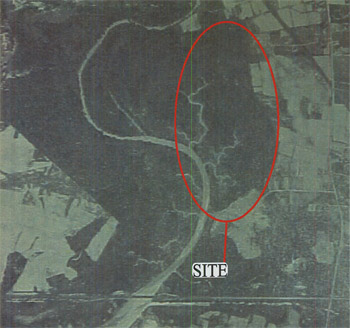|
Wetland Restoration near Bladensburg
Over time, the Anacostia has lost 95% of its tidal wetlands. Wetlands were once considered useless, disease-ridden places (for example, malaria and yellow fever) that were to be avoided. Filling of some wetlands in the Anacostia was at the request of Congress due to fears of disease.
We now realize that wetlands provide many benefits to society -- such as:
• fish and wildlife habitats,
• highly valuable nursery grounds for fish;
• natural water quality improvement;
• contaminant trapping and biodegradation;
• flood storage;
• shoreline erosion protection;
• opportunities for recreation; and,
• aesthetic appreciation.
Wetlands are among the most productive ecosystems in the world, comparable to rain forests and coral reefs. They also are a source of substantial biodiversity in supporting numerous species from all of the major groups of organisms – from microbes to mammals. Restoration of wetlands will help achieve the goal of a fishable, swimmable Anacostia.
Protecting wetlands can, in turn, protect our health and safety by reducing flood damage and preserving water quality.
As the following movie indicates, the upper portion of the Anacostia, near Bladensburg, is one reach of the river that has been most severely altered, resulting in a substantial loss of wetland habitat. The red oval indicates the general area where NOAA is working with stakeholders to re-create tidal wetlands.

Click to play the movie to see the changes from 1938 to 1963
Anacostia Wetland Mitigation Project (ANA-11)
NOAA, Maryland State Highway Administration (MSHA), the Maryland-National Capital Park and Planning Commission (M-NCPPC), Prince George’s County, the Federal Highway Administration (FHA), and the Environmental Protection Agency (EPA) are cooperatively working to create a functional tidal wetland along the Anacostia River that will serve a three-fold purpose:
• provide valuable habitat for fish and other wildlife;
• satisfy tidal wetland mitigation requirements of the Woodrow Wilson Bridge Replacement Project; and,
• provide future educational and recreational opportunities for patrons of M-NCPPC facilities.
The Anacostia East Wetland Mitigation Project, designated ANA-11, also serves a goal identified in the Anacostia Watershed Toxics Alliance 2002 Management Plan related to wetland functions for improving water quality. This is because wetlands can serve as a filter for overland run-off, plus they trap sediments flowing down stream. The microbes present in wetlands also can degrade nutrients, one of the major pollutant issues in the Chesepeake.
The ANA-11 site is located on M-NCPPC property just downstream from Bladensburg and just upstream of the Washington, D.C. border. The site covers approximately 54 acres along the eastern shore of the Anacostia. Approximately 25 acres of the site is being designed as a wetland mitigation site for the Woodrow Wilson Bridge Replacement Project.
When completed, the site will have been transformed into a tidal wetland consisting of a series of aquatic zones that will provide habitat for fish and promote the growth of various wetland plant species. Construction is scheduled to start in 2007.
|


